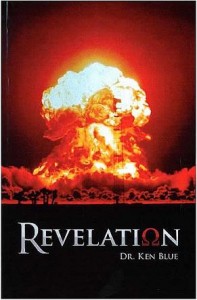
The Vision on Earth – The Seals and the Sealing
Chapters 6:1-7:8 give the vision of whatJohnsees on earth. Keep in mind that chapters 2 and 3 are the vision of the people on earth with the Son of Man in the midst of the Jewish assemblies. Chapters 4 and 5 are the vision of things in heaven, the throne, the book, and the Lamb. Chapter 6-7:8 are on earth, the six seals, and the 144,000.
“And I saw when the Lamb opened one of the seals, and I heard, as it were the noise of thunder, one of the four beasts saying, Come and see. And I saw, and behold a white horse: and he that sat on him had a bow; and a crown was given unto him: and he went forth conquering, and to conquer.” (Revelation 6:1-2).
When the Lamb opens one of the seals on the book of judgment, a loud thunder roll introduces the coming of the four horsemen. Nothing gets our attention like a sudden clap of thunder on a quiet summer night. The day may have been peaceful, but that earsplitting sound announces that a storm is on the way. The Book of Revelation is about a storm. It is the storm of God’s wrath on Satan, the god of this world, and his followers.
In the Bible, horses are associated with battle. Job described this fearless champion in Job 39:19-25, “Hast thou given the horse strength? hast thou clothed his neck with thunder? Canst thou make him afraid as a grasshopper? the glory of his nostrils is terrible. He paweth in the valley, and rejoiceth in his strength: he goeth on to meet the armed men. He mocketh at fear, and is not affrighted; neither turneth he back from the sword. The quiver rattleth against him, the glittering spear and the shield. He swalloweth the ground with fierceness and rage: neither believeth he that it is the sound of the trumpet. He saith among the trumpets, Ha, ha; and he smelleth the battle afar off, the thunder of the captains, and the shouting.”
When the Lamb opens the first seal, a white horse comes forth. The rider is not identified, except for the bow and the crown, which are in his hand.
The first time the bow is mentioned in Scripture, it is called a “weapon” of war. “Now therefore take, I pray thee, thy weapons, thy quiver and thy bow, and go out to the field, and take me some venison;” (Genesis 27:3). Many commentators make much of the silence concerning this rider’s lack of arrows. They assume that since none are mentioned he did not have them, but he conquers through means of peace and diplomacy. However, we don’t find a mention of arrows in Genesis 48:22 either: “Moreover I have given to thee one portion above thy brethren, which I took out of the hand of the Amorite with my sword and with my bow.” No arrows are mentioned here. They are assumed. We can also be sure this rider has (modern) weapons in his conquest.
One must not ignore the use of colors in Scripture. The white horse and its rider with a bow and crown are symbolic of the beginning of a procession, which includes and concludes with a cavalry from hell. As each rider comes forth, the situation on earth intensifies. By comparing Scripture with Scripture far and near, the meaning of each horse and his rider can be understood.
Pastor Ken Blue was born in Boswell, Ark. In 1955 he accepted Christ as his Savior. He and his wife Joyce were married in 1955. They have 5 children. He graduated from Midwestern Baptist Bible College in 1969 and started the Open Door Baptist Church in Lynnwood, Wa. where he pastored for 39 years. Because of health issues (ALS) he was forced to resign as pastor. It is his desire to continue to be used of God to help pastors and believers through this ministry.
